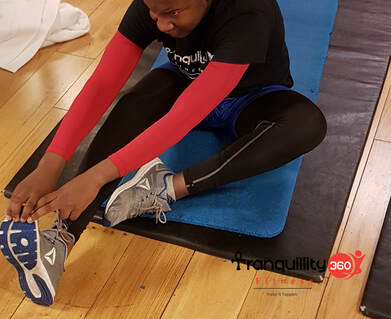 Plyometric exercises are powerful aerobic exercises used to increase your speed, endurance, and strength. They require you to exert your muscles to their maximum potential in short periods of time. Also known as jump training, plyometric exercises are usually geared toward highly trained athletes or people in peak physical condition. However, they can also be used by people wishing to improve their fitness. Plyometric exercises can cause stress to the tendons, ligaments, and lower-extremity joints, especially the knees and ankles. It’s important that you have the strength and fitness level necessary to do these exercises safely and effectively. If you’re adding plyometric exercises to your workout routine, work up to them gradually. Slowly increase the duration, difficulty, and intensity of the exercises. Plyometric Benefits There are many benefits to doing plyometric exercises. Since they require little to no equipment, they can be done anytime, anywhere. Plyometric training increases muscle strength, which allows you to run faster, jump higher, and change direction quickly. They improve performance in any sport that involves running, jumping, or kicking. In what’s known as the stretch-shortening cycle, concentric contractions (shortening the muscles) are followed by eccentric contractions (stretching the muscles). This provides excellent results in strengthening muscles while improving agility, stability, and balance. These combined benefits allow your muscles to work more quickly and efficiently. Plyometrics tone the entire body, burn calories, and improve cardiovascular health. They also boost your stamina and metabolism. In addition, plyometric exercises rapidly stretch your muscles, allowing you to move more efficiently. While this is good for increasing force, you must use caution since it can increase stress and injury. Squat jumps 1. Stand with your feet slightly wider than your hips. 2. Lower your body to squat down. 3. Press up through your feet, engage your abdominal, and jump up explosively. 4. Lift your arms overhead as you jump. 5. Upon landing, lower yourself back down to the squatting position. 6. Do 2 to 3 sets of 10 repetitions. Reverse lunge knee-ups 1. Start in a standing lunge with your left foot forward. 2. Place your right hand on the floor next to your front foot and extend your left arm straight back. 3. Explosively jump up to bring your right knee up as high as you can, lifting your left arm and dropping your right arm back and down. 4. Upon landing, move back into the starting lunge position. 5. Continue for 30 seconds. 6. Then do the opposite side. Box jumps For this exercise, you’ll need a box or something to jump on that’s 12 to 36 inches high. To increase the intensity, you can do the exercise using one leg. 1. From standing, squat down to jump onto the box with both feet. 2. Lift your arms up as you jump to gain momentum. 3. Jump up and backward off the box, gently landing with bent knees. 4. Do 2 to 3 sets of 8 to 12 repetitions. Foot Note Plyometric exercises can help improve athletic performance in athletes and develop physical fitness in nonathletes. Plyometrics increase speed, power, and quickness. The exercises use a lot of force and require a lot of strength, mobility, and flexibility. This requires you to be relatively physically fit before beginning them.
1 Comment
|
AuthorsThis blog is updated by Tranquillity 360 fitness personal trainers, as well as other guest bloggers. Archives
July 2021
Categories |

 RSS Feed
RSS Feed